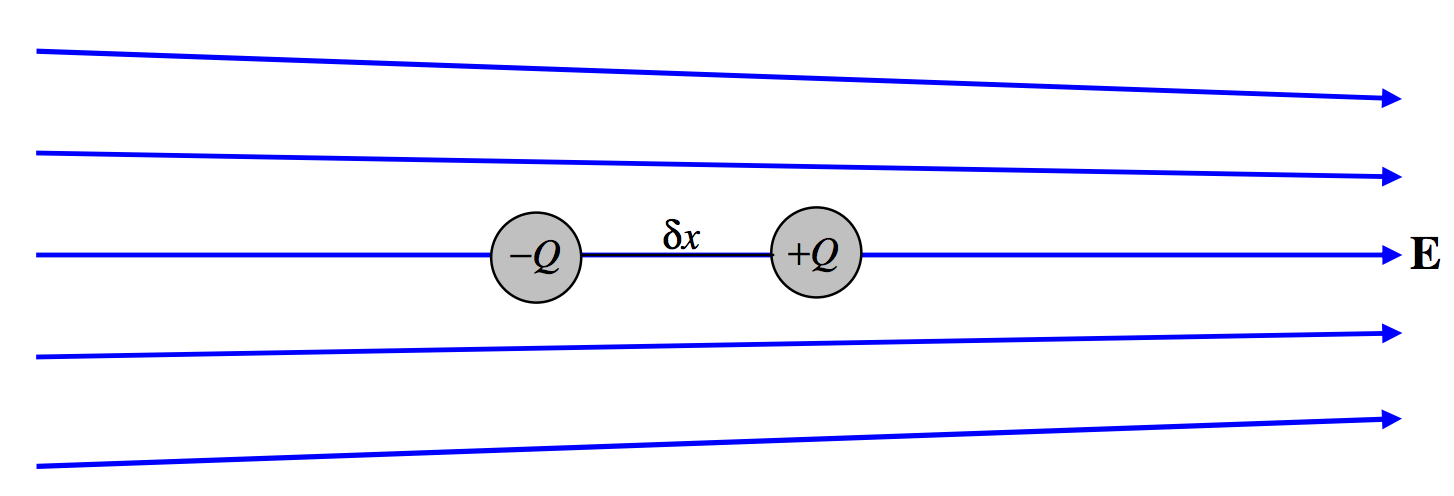3.5: Force on a Dipole in an Inhomogeneous Electric Field
( \newcommand{\kernel}{\mathrm{null}\,}\)
 FIGURE III.4
FIGURE III.4
Consider a simple dipole consisting of two charges +Q and −Q separated by a distance δx, so that its dipole moment is p=Qδx. Imagine that it is situated in an inhomogeneous electrical field as shown in Figure III.4. We have already noted that a dipole in a homogeneous field experiences no net force, but we can see that it does experience a net force in an inhomogeneous field. Let the field at −Q be E and the field at +Q be E+δE. The force on −Q is QE to the left, and the force on +Q is Q(E+δE) to the right. Thus there is a net force to the right of QδE, or:
Force=pdEdx
Equation ??? describes the situation where the dipole, the electric field and the gradient are all parallel to the x-axis. In a more general situation, all three of these are in different directions. Recall that electric field is minus potential gradient. Potential is a scalar function, whereas electric field is a vector function with three component, of which the x-component, for example is Ex=−∂V∂x. Field gradient is a symmetric tensor having nine components (of which, however, only six are distinct), such as ∂2V∂x2,∂2V∂y∂z etc. Thus in general Equation ??? would have to be written as
(ExEyEz)=−(VxxVxyVxzVxyVyyVyzVxzVyzVzz)(pxpypz)
in which the double subscripts in the potential gradient tensor denote the second partial derivatives.


